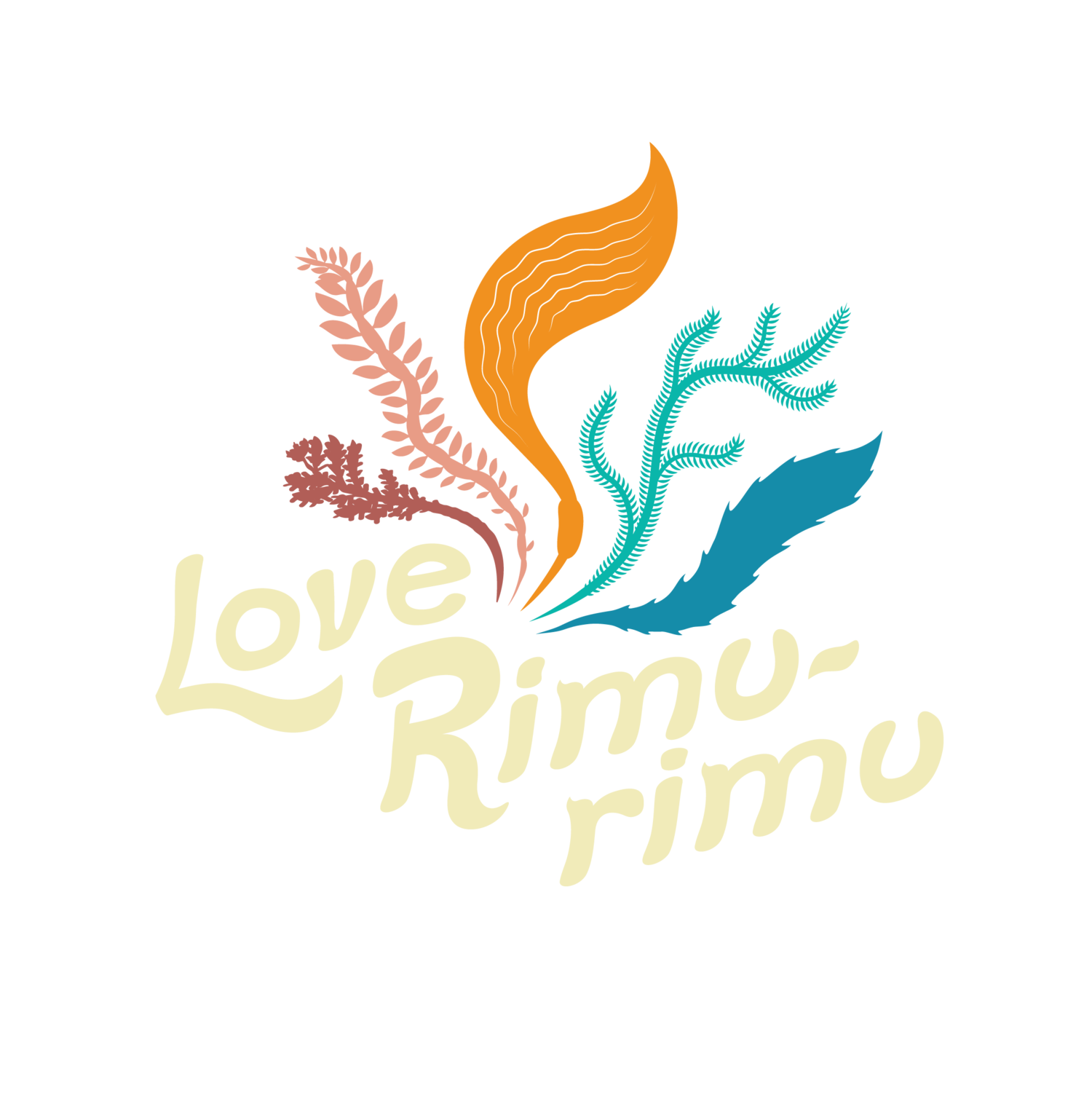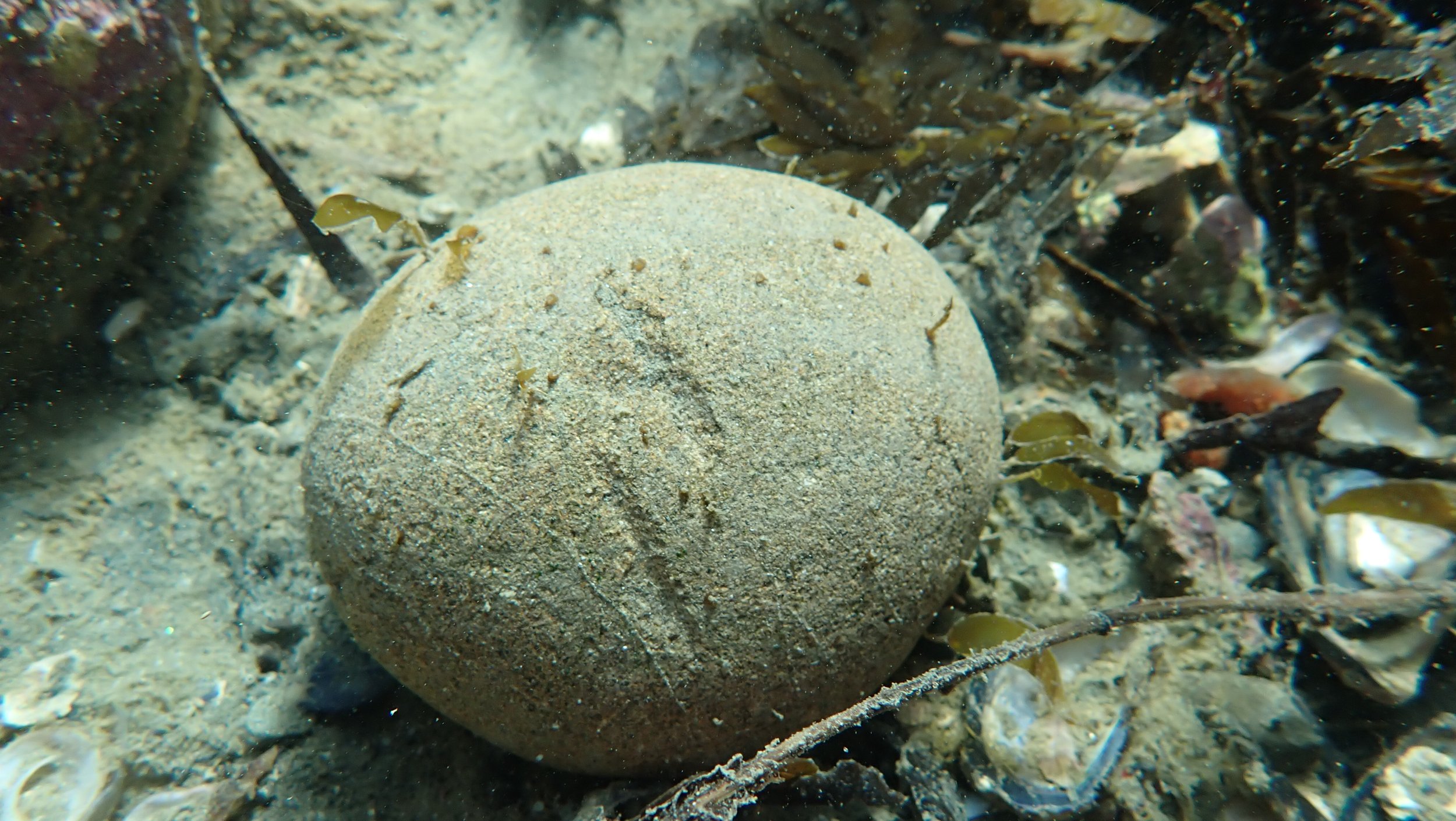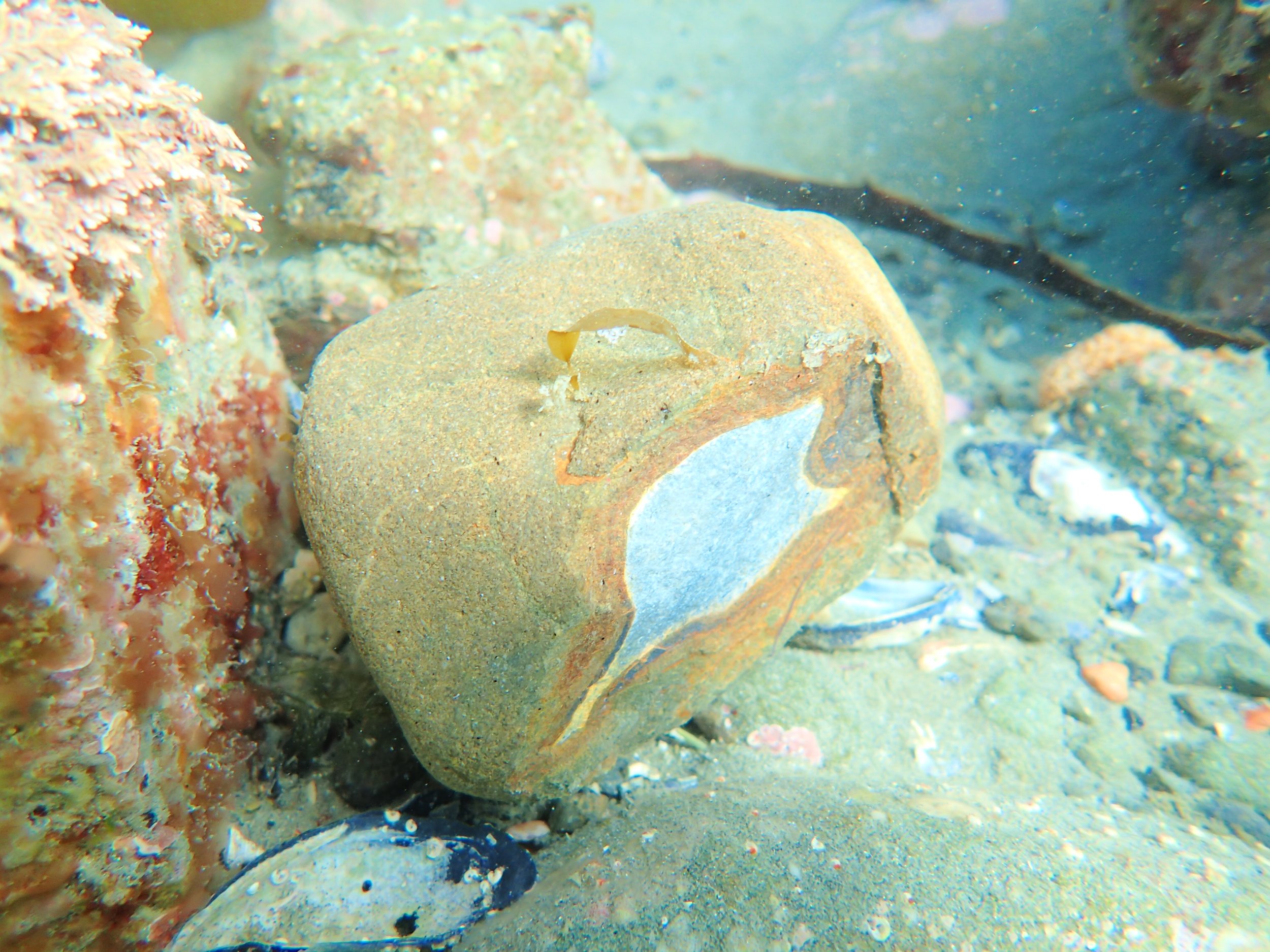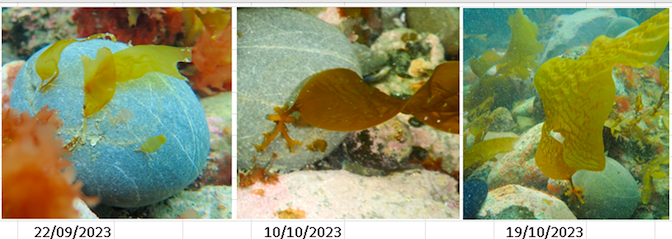What’s your secret C2,B3?
Monitoring is a crucial part of the work of Love Rimurimu and thanks to the dedication of Rachel Parry, our Science Lead & Kelper trainer we’ve been closely tracking the progress of our community plant-outs.
This is a story of death, of murderous intent and of survival. This is the story of C2, B3.
First we’d better set the scene. It’s a week after our first seaweed plant-outs and things have been looking pretty dicey out there. We’ve had big swells and rainfall, keeping us out of the water, and worrying. Are our seaweeds faring ok?
We know life is challenging for a baby seaweed and everything wants to eat them. Like everything. The Love Rimurimu team are a bunch of concerned and inexperienced new parents. We wring our hands at night.
Looking irresistable - not a great plan for a young seaweed.
When we get back in monitoring confirms we’ve lost some. Many of the seaweeds have been knocked about, and lots have been grazed. It can’t be helped. There’s lots of hungry animals out there. But it’s hard to feel warmly towards the snail that’s just slaughtered our young seaweed- cutting them down in their infancy with their terrible radula.
Then we remember to have our morning coffee. Everything needs to have breakfast we suppose. However, over time mortality rises and 3 of our 5 plant out areas (C1, C3 & C5) get completely wiped out.
As we progress our visits also reveal other interesting things. One day there's evidence that an octopus has been through our plant-out site - leaving the carnage of it’s crab lunch behind, and pushing over the green gravel in its way. We discover the rocks tipped over, and shoved into dark corners. But octopuses, at least, don’t seem to want to eat our seaweeds.
Some of the ‘green gravel’ snacks we’ve been providing to local biodiversity. Grazers have taken out many of the young kelplings.
_____________________
This probably isn’t sound very promising but in fact it is; because this is a story of survival.
While other kelpings fell, two sites persisted - C2 & C4. The largest of all - C2, B3 (C - standing for Cluster and B -standing for Big rock) is still very much alive, and growing into a very strong candidate. .
As we expected, and as Rach explains below
“many of the kelplings were promptly munched upon by gastropods (snails), fish and other creatures. However, the ones that survived are going very strong. We have seen huge growth spurts and the development of strong, steady holdfasts (the part that anchors the rimurimu to the bottom - similar to roots, found on plants) and now the kelplings are developing pneumatocysts (air bladders) and splitting into various blades (like leaves- but for seaweed).
One of our best performers is affectionately known as C2,B3 and it’s grown almost 40cm in the past 2 months
This little kelpling went from around 4 cm to 40 cm in just two months!
So, what is this teaching us? As we scale up we need to accept that a large amount of the seaweeds simply won't make it. But perhaps dense seeding onto the rocks, and onto a larger amount of rocks, is going to give us the best chances of success. The point of these trials, and such close observation is to discover what will give us the best outcomes in future efforts.
We’re also keen to better understand why C2,B3 has survived while others haven’t - is it just a numbers game or is there something special about it’s location, the rock it’s on, or the way the light hits it at sundown… There’s lots to discover.
In the meantime - we hope you’ll join us in wishing C2 B3 the best.







